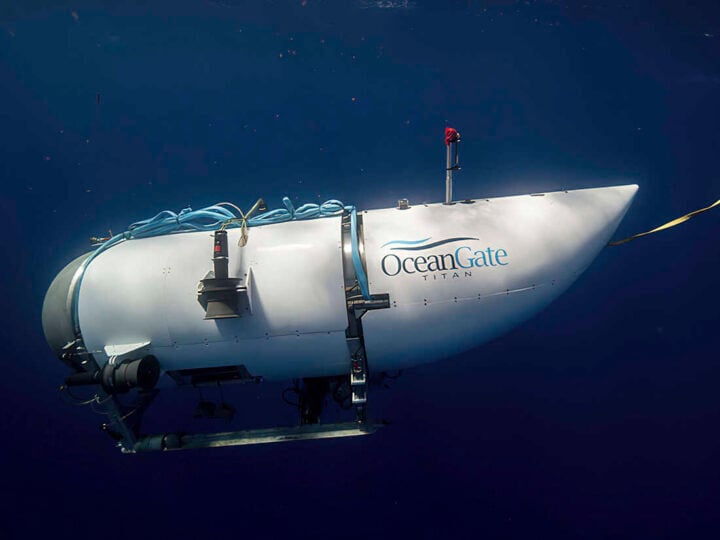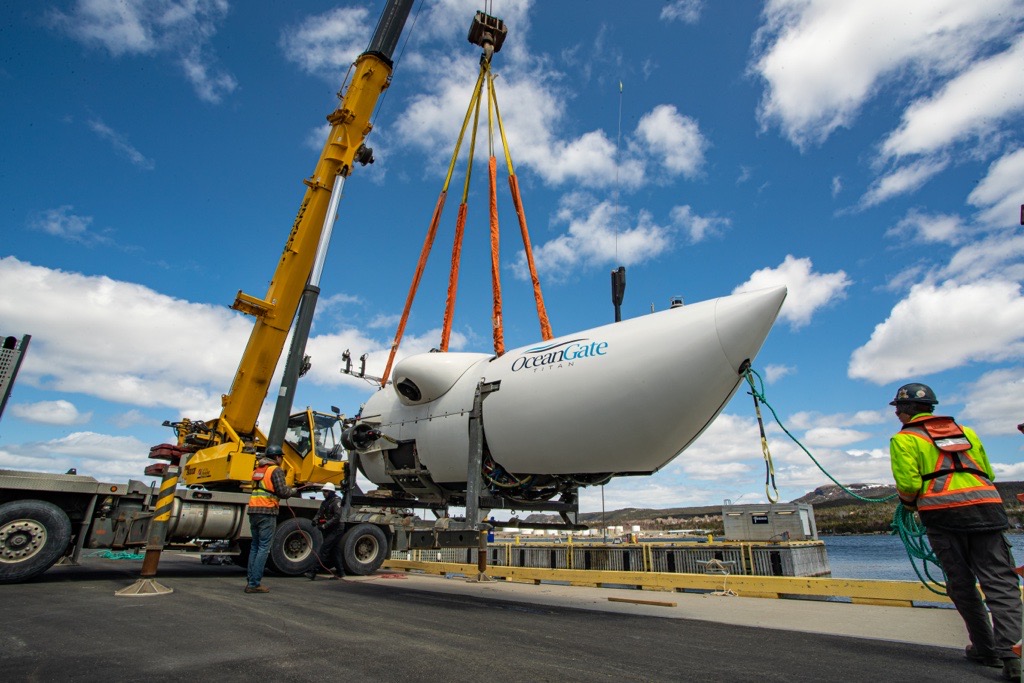On June 18, a submersible named Titan descended into the Atlantic Ocean to explore the ruins of the historic Titanic ship. Less than two hours into its proposed eight-day journey, the vessel lost touch with its mothership and went missing with all five passengers aboard.
After four days of frantic search with no success, all passengers were confirmed dead. The US coast guard says the cause of death is a “catastrophic implosion”.
How did we get here? What were the five men going to do at the bottom of the ocean? How much did this cost? Did they know there was a possibility they could die? In this explainer, TheCable answers all the frequently asked questions about this global event.
WHAT IS A SUBMERSIBLE?

A submersible is a vehicle designed to work underwater. Think of it as a small fish-looking car that can be driven underwater. In this particular case, the Titan submersible is a small watercraft that could carry about five people to as far as the bottom of the ocean.
Advertisement
A submersible is slightly different from a submarine in that it has its own oxygen renewal system and does not depend on another vessel for its air and power supply.
They are used for oceanography, ocean exploration, underwater archeology, and maintenance of other underwater equipment. If you’re feeling adventurous, you can also use it for underwater videography.
WHY WERE THEY GOING TO THE OCEAN FLOOR?

The five men involved were going to see the wreckage of the historic ship known globally as Titanic, which sank in Canada over 100 years ago.
Advertisement
Before the Titanic sank in April 1912, it was dubbed “unsinkable”. The 882ft ship took off from Southampton, England, for New York City but never made it to its destination.
Four days into its maiden voyage, Titanic struck an iceberg in the Atlantic Ocean and less than three hours later it sank, taking about 1,500 people into the depths of the sea with it.
According to the National Oceanic and Atmospheric Administration (NOAA), the ship was near Newfoundland, Canada, when it sank, just about 400 miles off the coast and most of the Titanic wreckage remains about 563 kilometres off the coast of Newfoundland.
Today, the Titanic sits on the ocean floor, about 12,500 feet — 3.81 kilometres — below sea level. The two broken parts of the ship – the bow and the stern — are over 2,600 feet apart and are surrounded by debris.
Advertisement
WHO WERE THE PEOPLE ON BOARD?

The passengers included Shahzada Dawood, a prominent Pakistani man and his teenage son Suleman; Hamish Harding, a British businessman; Paul-Henri Nargeolet, a French diver, and Stockton Rush, OceanGate CEO.
Nargeolet, the French diver, had completed at least 35 trips to the Titanic wreckage.
HAVE THEY DONE THIS BEFORE?
Yes. Since the Titanic sank, the ship has become a tourist site for explorers and thrill seekers curious about unraveling the mystery behind what is arguably one of the world’s wonders.
The ship’s first successful discovery was in 1985 by Robert Ballard, an oceanographer who led the expedition in a submersible sled called Argo. Soon, other explorers followed suit.
Advertisement
RMS Titanic Inc., a tourism company, for example, has conducted eight expeditions to the Titanic, and has auctioned off more than 5,000 objects taken from the site, including jewelry and a piece of the ship’s grand staircase.
Countless trips have also been made by researchers, salvagers, and even filmmakers like James Cameron, who directed the 1997 blockbuster film Titanic, to the wreck. And for a pretty penny, tourists have been able to go too.
Advertisement
OceanGate, the diving tour company, charged passengers $250,000 for the trip to the 1912 historic site.
Advertisement
Although the company says it made previous successful trips to the Titanic wreckage, court records show that OceanGate faced a series of mechanical problems that forced the cancellation or delays of trips in recent years.
Advertisement
Other expeditions have also been delayed after OceanGate was forced to rebuild the Titan’s hull because it showed “cyclic fatigue” and wouldn’t be able to travel deep enough to reach the Titanic’s wreckage, according to a 2020 report.
David Lochridge, who worked as an independent contractor for OceanGate in 2015 and as its employee between 2016 and 2018, once brought up concerns about the Titan’s hull.
Lochridge said no non-destructive testing had been performed on the Titan’s hull to check for “delaminations, porosity and voids of sufficient adhesion of the glue being used”.
He was sued by OceanGate in 2018 for allegedly sharing confidential information.
Two former OceanGate employees separately raised similar safety concerns about the thickness of the submersible’s hull when they were employed by the company.
In a letter to the company, which the New York Times obtained, safety concerns were also raised by The Manned Underwater Vehicles committee of the Marine Technology Society over what it referred to as the company’s “experimental approach” of the Titan vessel and its planned expedition to the site of the Titanic wreckage.
WHY WAS TITAN SO DIFFICULT TO FIND?

According to the NOAA, only about 20% of the seafloor has been mapped and a vast majority has never been seen by human eyes despite tens of thousands of years of exploration.
Experts say traveling to space is easier than plunging to the bottom of the ocean. For context, while 12 astronauts have spent a collective total of 300 hours on the lunar surface, only three people have spent around three hours exploring Challenger Deep, the deepest known point of Earth’s seabed, according to the Woods Hole Oceanographic Institution.
The reason is simple. Descending into the ocean’s depths means venturing into a realm of immense pressure that intensifies as you go deeper—a highly risky undertaking. Because sunlight does not penetrate this level of depth, the environment is completely shrouded in darkness and intensified by extreme levels of cold.
As a matter of fact, the deepest parts of earth’s oceans are known as the hadal zone – named after Hades, the Greek god of the underworld.
The same factors that made Titan so hard to find are also the reasons why there has been very limited exploration of the ocean floor – it is almost impossible.
IS THERE ANY HOPE?

When Titan began its descent, it was estimated to have 96 hours of oxygen. Two days after the vessel lost contact with its mothership, a Canadian P-3 aircraft, part of the rescue team, detected banging sounds in the search area. Efforts to trace the source of the sound were unsuccessful.
Soon, more vessels were deployed and authorities began a frantic race against time to find Titan.
On Thursday evening, rescue teams found debris believed to be from Titan near the Titanic. Although authorities still tried to hold out hope in the belief that it is not unusual for debris to be found around the Titanic, tests run on the debris showed that it was from the hull of the Titan.
A few hours later, OceanGate confirmed the death of all passengers.
John Mauger, a US coast guard, added that the submersible with five passengers suffered a “catastrophic implosion” killing everyone on board.
Add a comment






